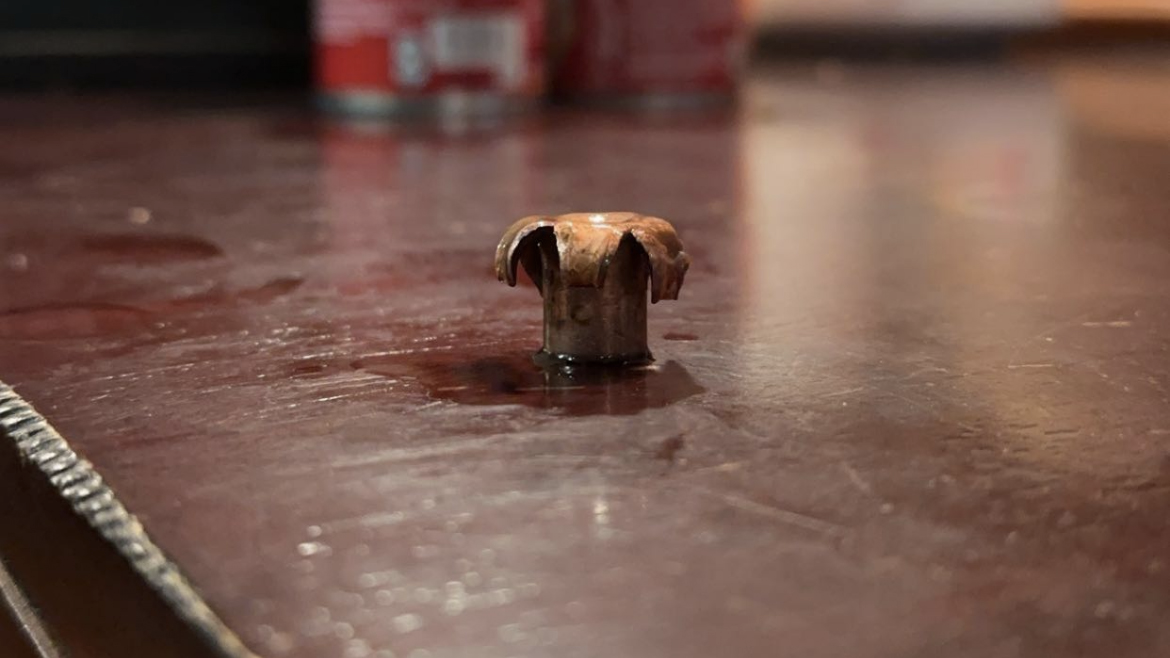Top Tips For Choosing The Best Muzzleloader Bullets
Posted by Aaron Warbritton Oct 27th 2025
In this blog, I’m going to highlight our experiences shooting various muzzleloader bullets. We’ve harvested many whitetails using muzzleloaders but had less the ideal results before switching to the Barnes Spitfire TMZ. This is how we got there.
By winter of 2017 we at The Hunting Public had harvested multiple bucks with a Thompson Center Impact muzzleloader using various bullets. As with any sort of testing on animals, all the results differed greatly from one another but by this time, a pattern began to emerge. Several of the bucks harvested yielded faint blood trails and long track jobs. Shots taken were all placed inside the rib cage. At the time, we hadn’t put any thought into it and just expected this was common with all muzzleloader bullets. Then came this hunt -

As you can see in the footage, we take the shot and it takes a few seconds for the smoke to clear. The buck stops and stands with the other deer acting surprised, almost as if he’s not hit. Eventually he slips off into thick cover and goes down but from our vantage point it was difficult to see what happened. Immediately following the shot, we were not certain the bullet ever hit the deer. It wasn’t until several hours later after looking at the video that we determined he was fatally hit. When we played back the footage in slow motion on a large screen, Greg and I were able to see that it was a well placed shot. Just before he cut the camera, you can see the buck bed down. I DID NOT see this with the naked eye during the hunt so analyzing the footage played a key role in our decision to track this deer.
Around 8 PM we headed back out to the public land and were able to find the buck quickly. There was a fresh coating of snow on the ground but zero blood trail to go on. Luckily we had the luxury of slow motion video to assess the situation and see the buck go down. Otherwise this could have been quite the mystery.
Upon dressing the deer we were able to recover the bullet. This is not the type of performance you want to see. As you can tell from these photos, the bullet did not expand. The tip is slightly bent after hitting bone somewhere in the buck’s body (likely his rib cage). We recovered the bullet in the hide on the opposite side of it’s entry point.

After this occurred, we all concluded it was time for a change. Thankfully we were able to recover the deer and the bullet. This outcome could have been very different.
In the fall of 2018, we all switched to the Barnes Spitfire TMZ muzzleloading bullets. These proved to be accurate when sighting in but we were starting over and knew it would take time to build enough data as a group to feel confident about this new ammo.
It took a few years and several deer harvests before we realized a new pattern. Deer shot with the Spitfire TMZ’s were leaving considerable blood trails and short track jobs. Upon examining them post shot, it was clear these bullets were causing significant trauma inside the deer. Several deer were either dropped immediately or within 50 yards of impact. It was clear there was a difference and the only thing we changed was the bullet.
Here is an image of one of the Barnes Spitfire TMZ bullets we recovered from a harvested buck. Notice the bullet expansion on the petals. This is what you want the bullet to look like after impact.

Since these findings we’ve stuck to similar load outs on our muzzleloaders and the majority of us at The Hunting Public continue to shoot the Spitfire TMZ. It has performed flawlessly on over a dozen deer and a wild hog!
A few years ago Ted and I were hunting the late muzzleloader season in Iowa. It was bitter cold with wind chills down near -30 degrees below zero. I took a shot at this mature buck at 150 yards and hit him in the top of the rib cage at the very edge of the kill zone. The shot yielded a great blood trail and the buck made it around 75 yards before piling up. When we dressed the deer you could see where shooting a quality bullet made a huge difference. The wound channel expanded into the top of the lungs causing massive trauma.
These are the situations where shooting ammunition with high terminal performance can be the difference between a long track job or a lost animal, and a quick humane kill. My shot on this buck was far from perfect but thankfully the bullet did it’s job. Here is the video.

If you’re looking for a muzzleloader bullet to try this year we’d highly recommend the Barnes Spitfire TMZ based on our experience.
Thanks for reading.
- Warb


